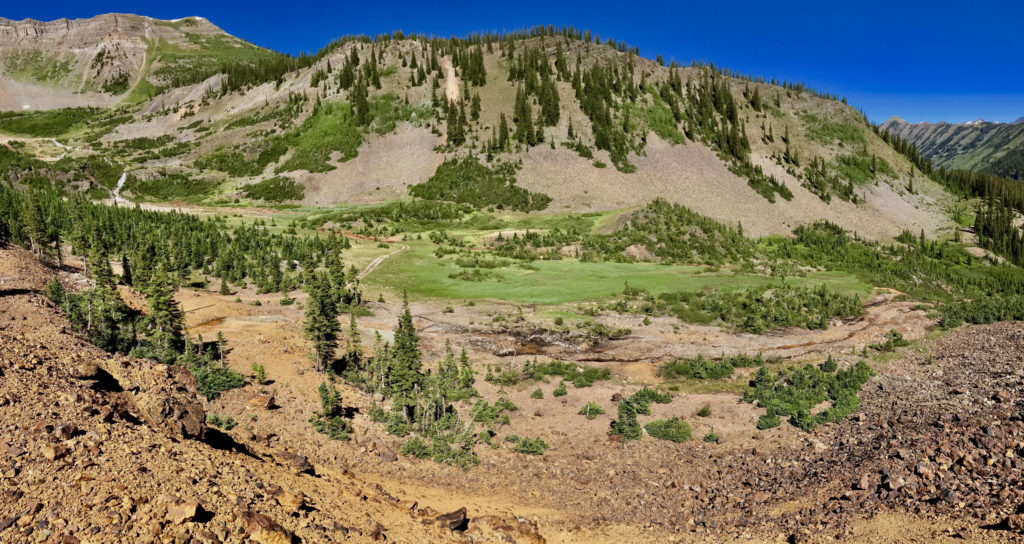New DOE University projects at East River announced
The US Department of Energy (DOE) has recently announced funding awards for six new university investigators working with Berkeley Lab and its myriad collaborators in the East River / Upper Gunnison. While some of these individuals have been or are currently working with us — some having previously presented to this group — others are new to the watershed and the project. We congratulate and welcome the contributions of the new scientists!
- Jeff Deems (CU Boulder) will utilize multi-scale, seasonal snowpack observations and modeling to more accurately account for water and solute storage and fluxes within the upper Gunnison basin.
- McKenzie Skiles (Univ. Utah) and Co-PI’s Janice Brahney (Utah State Univ.) and David Gochis (NCAR) will better constrain our physical understanding of aerosol loading, biogeochemistry, and snowmelt hydrology from hillslope to watershed scale within the East River watershed and its surrounding drainages.
- Both projects will rely heavily on data collected by NASA’s Airborne Snow Observatory and funded by the Colorado Water Conservation Board.
- Alejandro (Lejo) Flores (Boise State Univ.) and Co-PIs Rosemary Carroll (Desert Research Institute) and Haruko Wainwright (LBNL) will be working to advance our ability to accurately predict the spatiotemporal distribution of snow cover and water content across multiple scales by combining land-atmosphere models with operational, multi-satellite remote sensing data.
- Max Berkelhammer (Univ. Illinois, Chicago) and Co-PI Chris Still (Oregon State Univ.) will be installing a network of sapflow sensors and automated dendrometers that will be coupled with stable water isotope measurements to study subsurface hydrologic and physiological controls on transpiration across the East River watershed.
- Marco Keiluweit (Univ. Massachusetts) will be investigating the impact of plant root-mediated organic matter mobilization on soil carbon loss and nutrient export in mountainous watersheds, with a focus on the East River.
- Lee Liberty (Boise State Univ.) will be working with Berkeley Lab collaborators to utilize scale-dependent seismic imaging to estimate regolith, rock and fluid distributions in association with upcoming and planned drilling activities in the greater East River watershed.
A quick note to new scientists engaging in field work at East River: Prior to undertaking field research (i.e., ground-based work), please reach out to Dr. Jennie Reithel (jreithel@gmail.com), the Science Director at the Rocky Mountain Biological Lab (RMBL). Jennie is the primary point of contact for facilitating research activities within the greater watershed to ensure seamless integration with other RMBL scientists. She and I will work closely to ensure that your work is integrated into the existing Special Use Permits issued to RMBL and Berkeley Lab by the U.S. Forest Service.
Upcoming drilling in the Redwell Basin
Drilling of the lower elevation monitoring well (MW2) will begin the week of July 16th, 2018. This work will involve continuous coring to a depth of ca. 300-350 feet with an expectation of collecting samples from both the Cretaceous Mesa Verde formation and the underlying Mancos Shale. As with last year’s drilling at well MW1, this work will include downhole packer testing for vertically resolved estimates of hydraulic conductivity, open hole borehole geophysical logging, and multi-depth completions for sampling groundwater at discrete depths. For those who will be in the watershed during that week and have an interest in observing the activity, please correspond with myself and/or the USGS leads: Andy Manning (amanning@usgs.gov) and Lyndsay Ball (lbball@usgs.gov).
The impacts of the low snowpack year and very dry late spring / summer are especially evident up in the Redwell Basin. The below photo looking toward the new MW2 drilling site (center of the photo) illustrates just how little snowmelt and groundwater discharge we’re seeing this year as compared to most ‘average’ years.
Speaking of MW1, below are two virtual site visits of that location assessing the impact of a large avalanche that cut loose in the Redwell Basin this past winter.
June 21, 2018
July 2, 2018
NEON Airborne Observation Platform and “Meet the Scientist: Kate Maher”
Kate will be providing a more detailed update on the work and next steps as part of the July 17th Watershed Science Community Call. That said, a virtual site visit of some ground-based sampling is in order, as is a related “Meet the Scientist” video featuring Dr. Kate Maher.
NEON sampling
Meet the Scientist: Kate Maher

